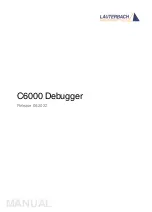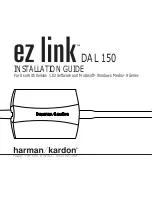
-5-
WARNINGS
1.
2.
3.
4.
5.
6.
7.
8.
9.
10.
11.
12.
13.
14.
For safety reasons, it is prohibited to do any modification to the seat.
The cyclist must be at least 16 years old.
Never transport two children at the same time.
Never leave the child alone on the seat when the bicycle is parked.
Never transport a child of the age more than 7 years old with max. weight of 22kg.
Never exceed the max. torque for tightening the bolts.
The perpendicular line of the arrow on the side must not be more than 10cm from the rear wheel axle.
If your bicycle is equipped with a spring type saddle, please use some cover to cover the springs
and prevent your child putting his fingers into the springs.
Do not attach additional luggage to the child carrier.
It is suggested to carry such loads at the opposite and of the cycle, e.g. in the case of a rear seat,
to use a front luggage carrier.
The cycle may behave differently with a child in the seat. Particularly with regard to balance, steering
and braking.
Do not use the seat if any part is broken.
It is recommended that a professional bicycle shop repair .
Do not remove the head bolster.
SAFETY INSTRUCTIONS
1.
2.
3.
4.
5.
6.
7.
8.
9.
10.
11.
12.
13.
14.
The back seat is for children up to 7 years with max. weight 22 kg for fixing on carriers of 26” to 28”
bicycle by dovetail support. The carrier capacity must be at least 25kg.
The cyclist and the child are required to wear qualified helmet.
Be sure the bicycle is stable when loading and unloading your child.
As the riding features can considerably change with the child in the back seat, it is advised to ride
slowly and not to ride on rugged road. It is also advised not to ride an rainy days.
Be sure to have one hand holding the back seat when the cyclist is walking with the bicycle.
Do not use for children under nine month old or weighing under 9 kilos. Carry only children that are
able to sit unaided for a longer period of time, at least as long as the intended cycle journey.
Be sure initially and to re-check from time to time that the child’s weight and size do not exceed the
maximum capacity of the seat.
Be sure that it is not possible for any part of the child’s body or clothing to come into contact with
any moving part of the seat or cycle and to re-check as the child grows. Refer to the particular
dangers of entrapment of feet in the wheel and of the fingers in the brake mechanisms and sprung
saddles.
Be sure that there are no sharp objects which the child can touch, e.g. frayed cables.
Be sure that the restraint system is not loose or able to become trapped in any moving parts
particularly the wheels, including when the cycle is ridden without a child in the seat.
Be sure to use the restraint system, ensuring the child is restrained in the seat.
It is suggested that children in seats need to be more warmly clothed than riders of cycles and
should be protected from rain.
Be sure to check any excessive temperature (e.g. due to direct exposure to sun) of the seat before
placing the child in it.
When transporting the bicycle by car (outside the car) remove the seat. Air turbulence might
damage the seat or loosen its fastenings to the cycle, which could result in an accident.


























